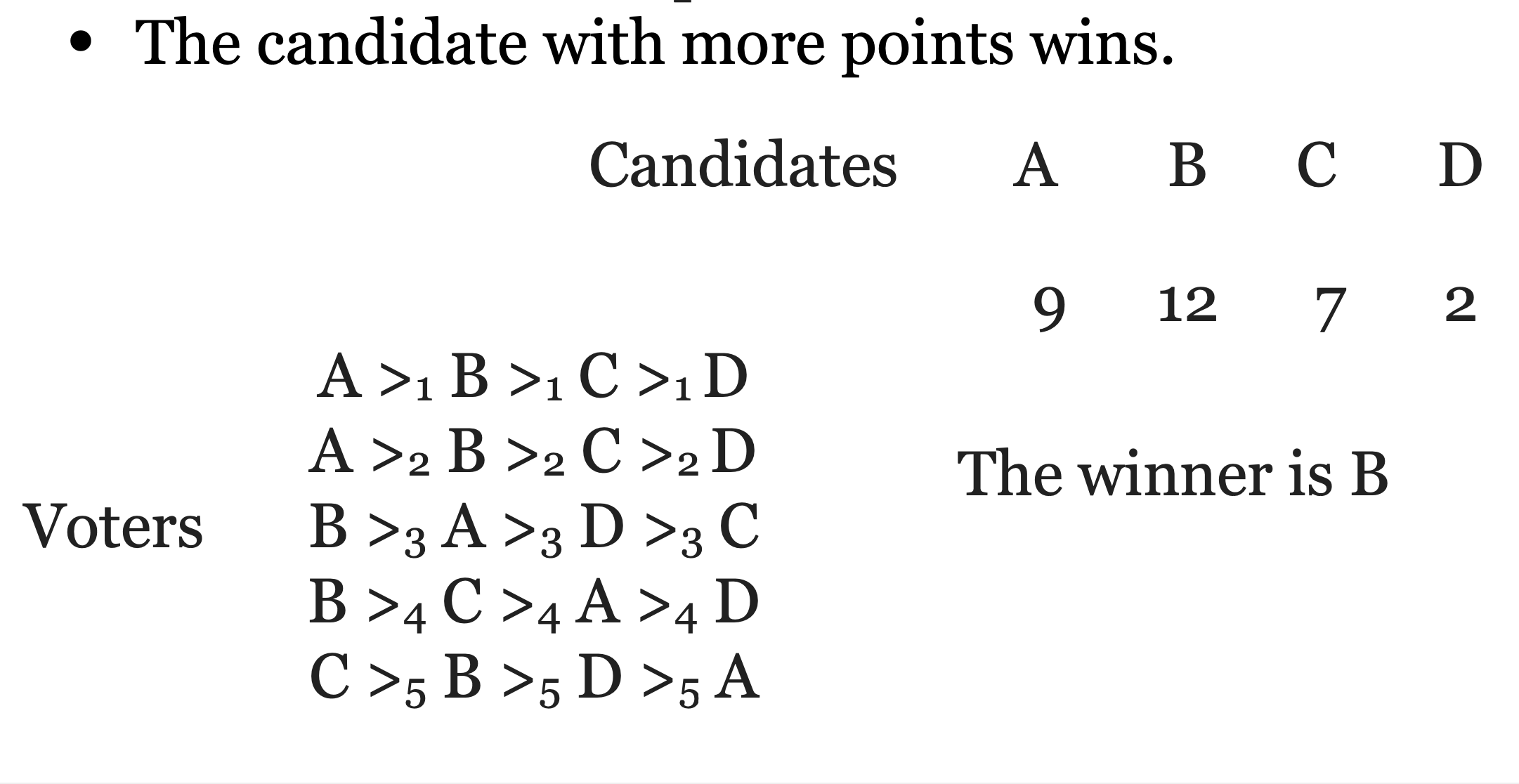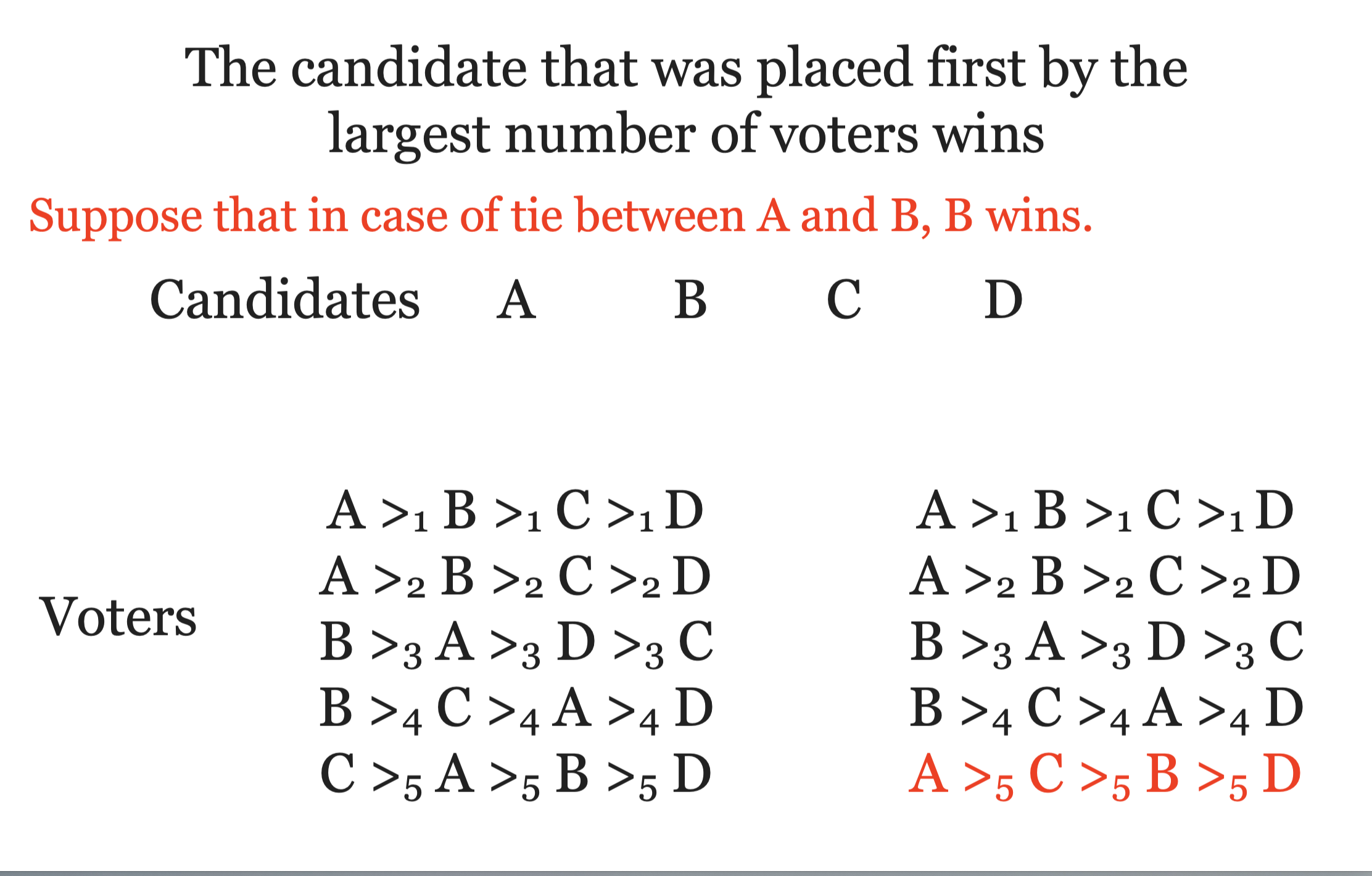Mechanism Design
-
Reverse engineering in Game Theory
-
Social Choice: aggregation of preferences of different participants toward a single joint decision
- We are going to use elections as an example ONLY, but we should bare in mind that what we say apply to the general social choice.
-
Mechanism Design: implement desired social choice in a strategic setting (participants are rational and selfish)
-
Examples:
-
Elections
-
Auctions
-
Government Policy
-
Borda count
-
Strategic Voting
Suppose that voter i’s preference A > B > C but all other voters “hate” A. Then voter i may have incentive to misreport e.g. B > A > C
Definitions
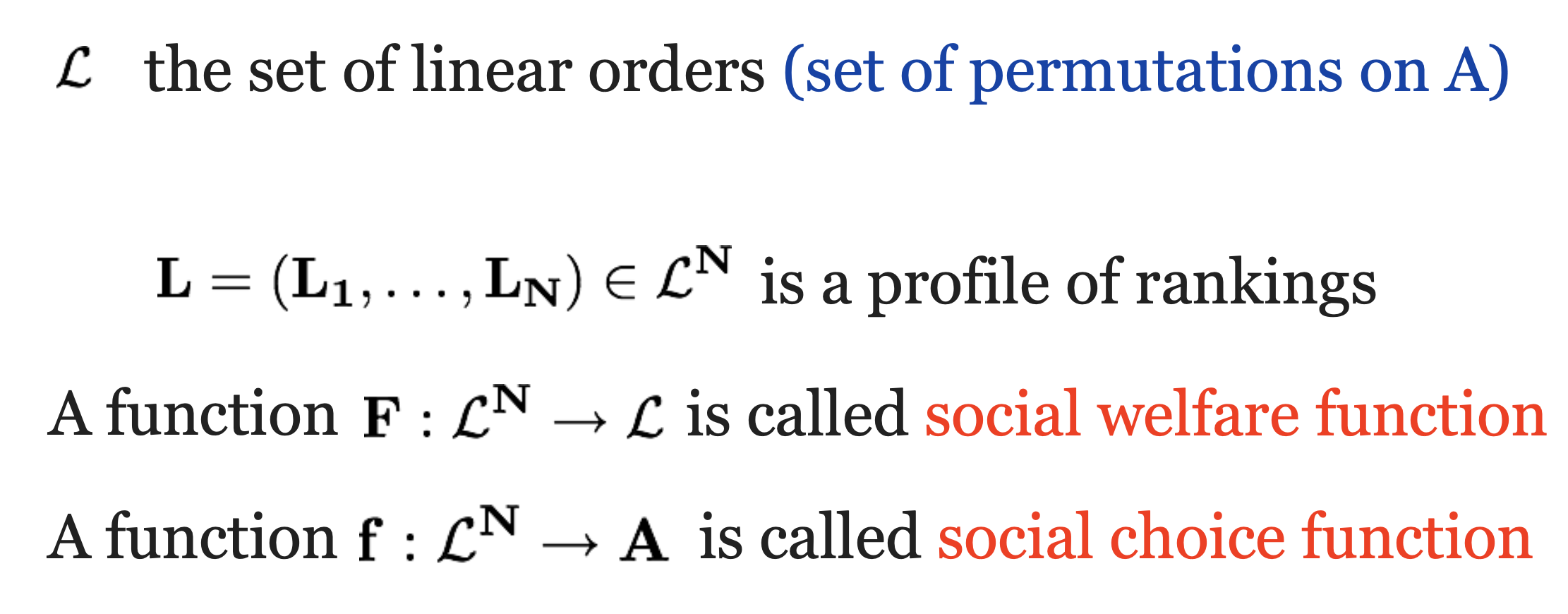
-
Example:
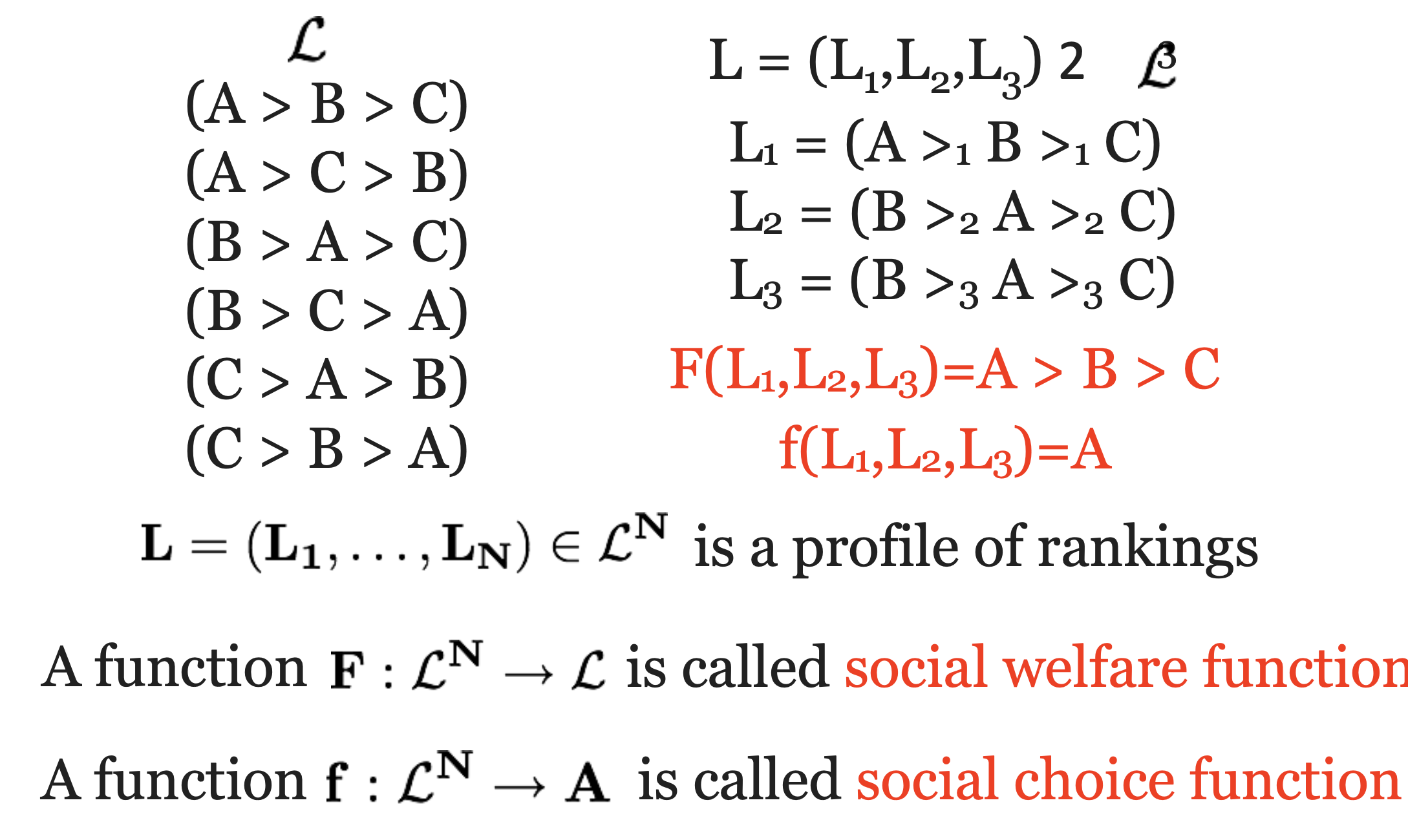
Properties of social welfare functions
Properties of s.w. functions
-
Pareto Efficiency:
- whenever an alternative a is ranked above b according to each Li, then a is ranked above b in F(L1,…,LN )


Independence of Irrelevant Alternatives
- Independent of Irrelevant Alternatives (IIA): whenever the ranking of a versus b is unchanged for each i=1,…,N when individual i’s ranking changes from Li to L’i, then the ranking of a versus b is the same according to both F(L1,…,LN) and F(L’1,…,L’N)


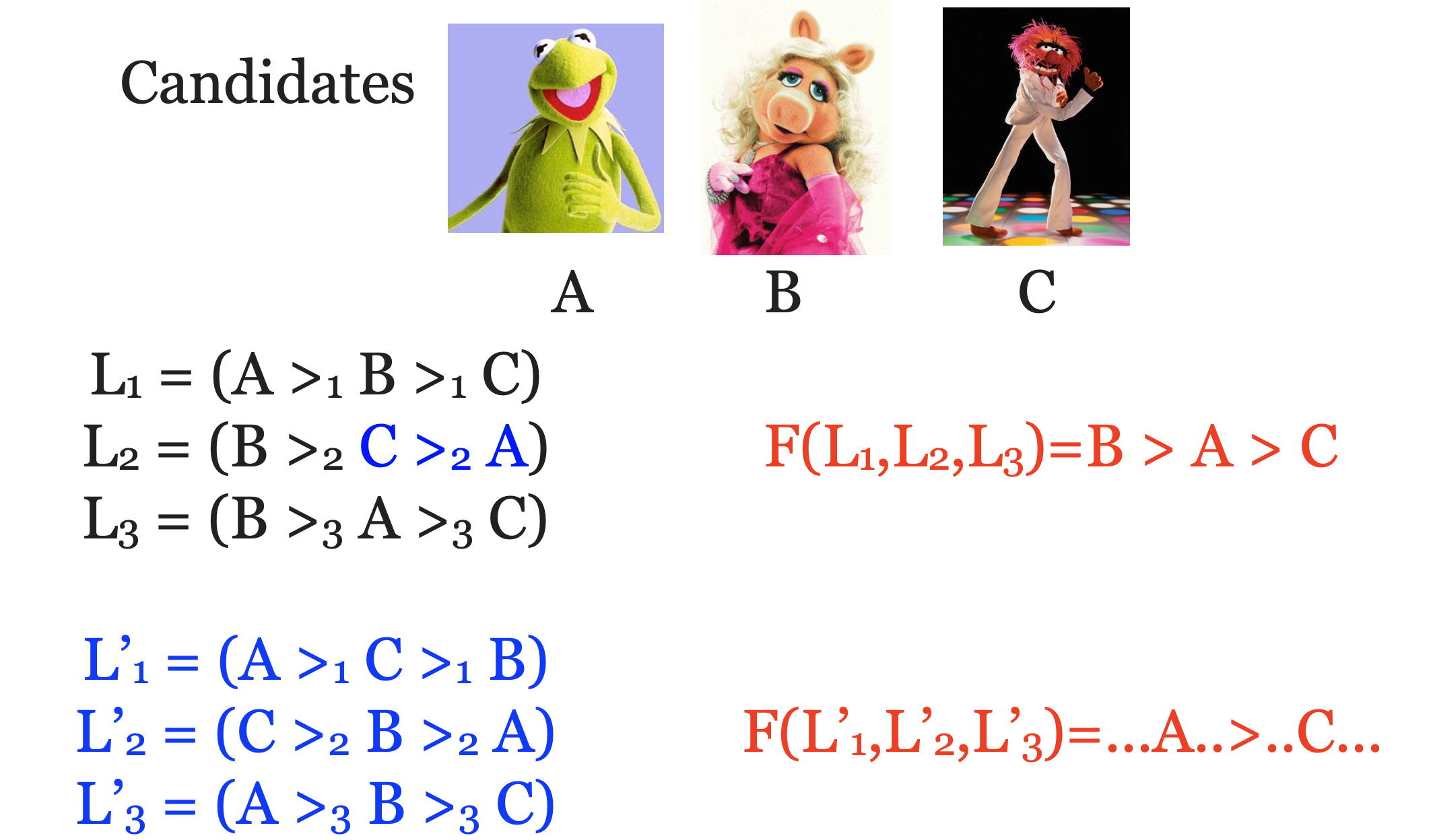
-
Dictatorial:
-
1
-
If there is an individual i such that F(L1,…,LN) = Li
-
L1 = (A >1 B >1 C)
-
L2 = (B >2 A >2 C)
-
L3 = (B >3 A >3 C)
-
F(L1,L2,L3)= L2 = (B > A > C)
-
==> Voter 2 is a dictator
-
2
-
L1 = (A >1 B >1 C)
-
L2 = (B >2 C >2 A)
-
L3 = (B >3 A >3 C)
-
F(L1,L2,L3)= L2 = (B > C > A)
-
==> Voter 2 is a dictator
Summary

Arrow’s Theorem (1963)
Theorem: If |A|≥3 and F satisfies Pareto Efficiency and IIA, then F is a dictatorial social welfare function.
Properties of social choice functions
- The social choice function f can be
strategically manipulated by some player i, if for some ranking profile L=(L1,…,LN), and for some L’i, we have
f(L’i,L-i)≠f(L) and f(L’i,L-i) >i f(L)
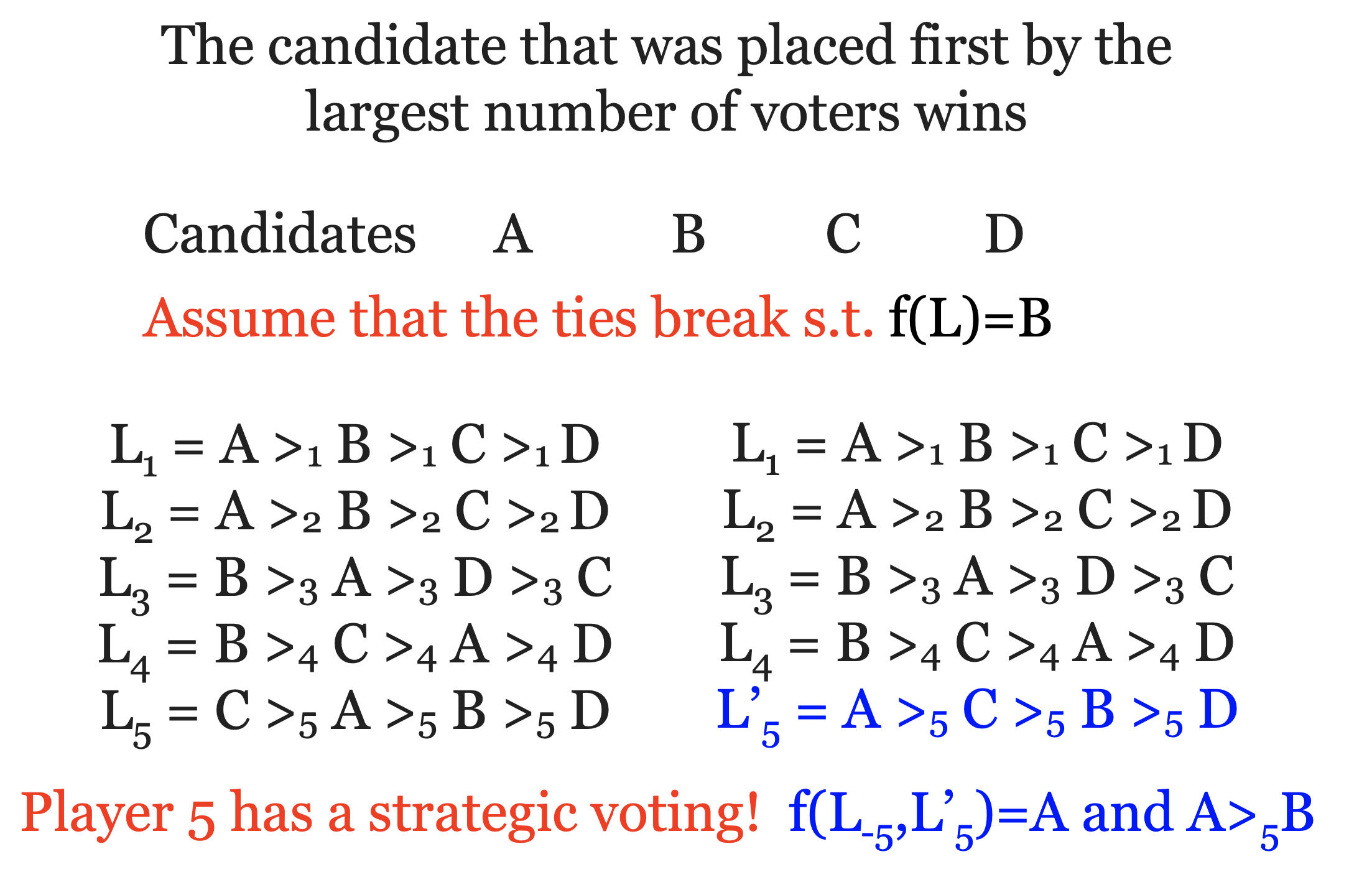

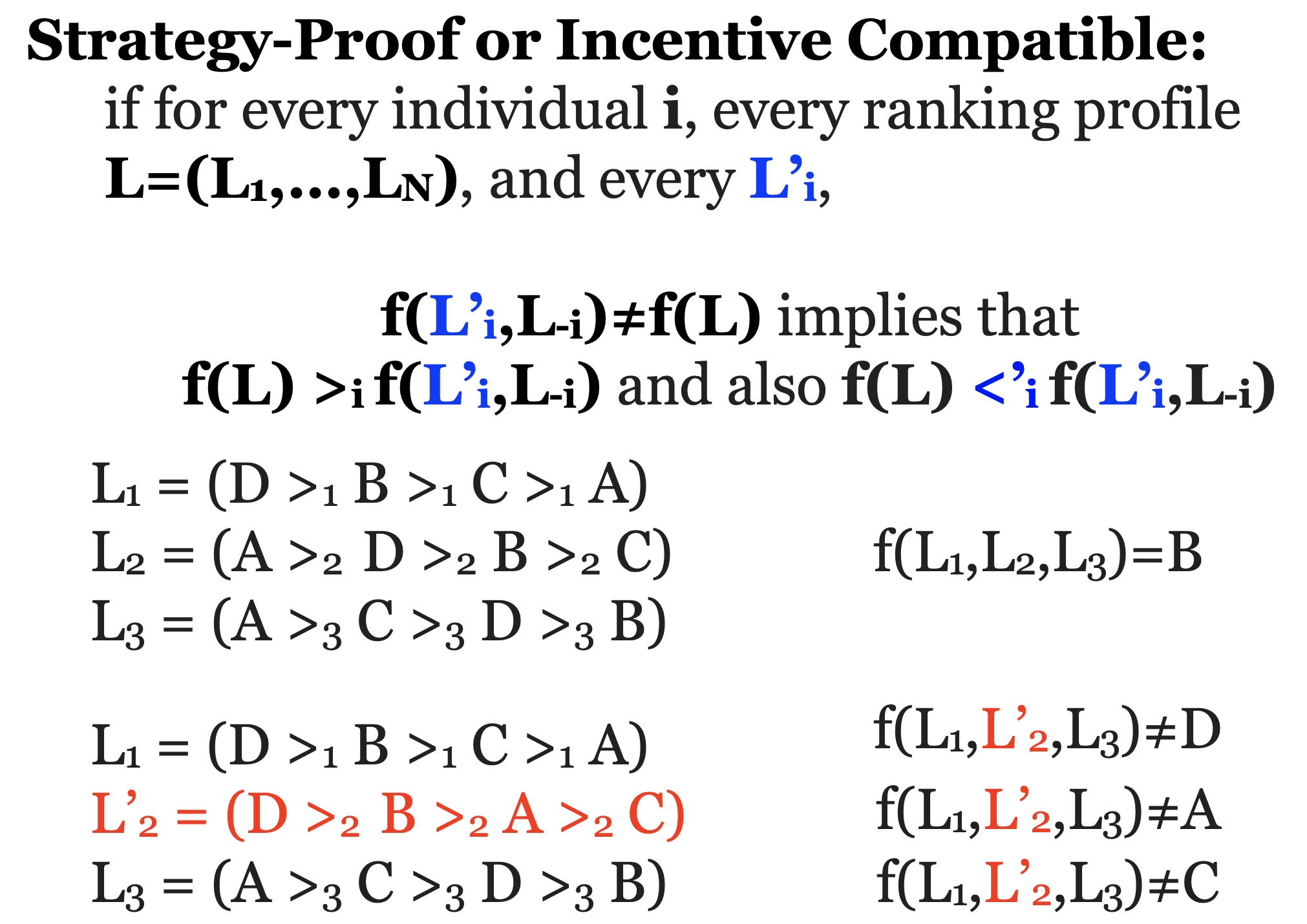
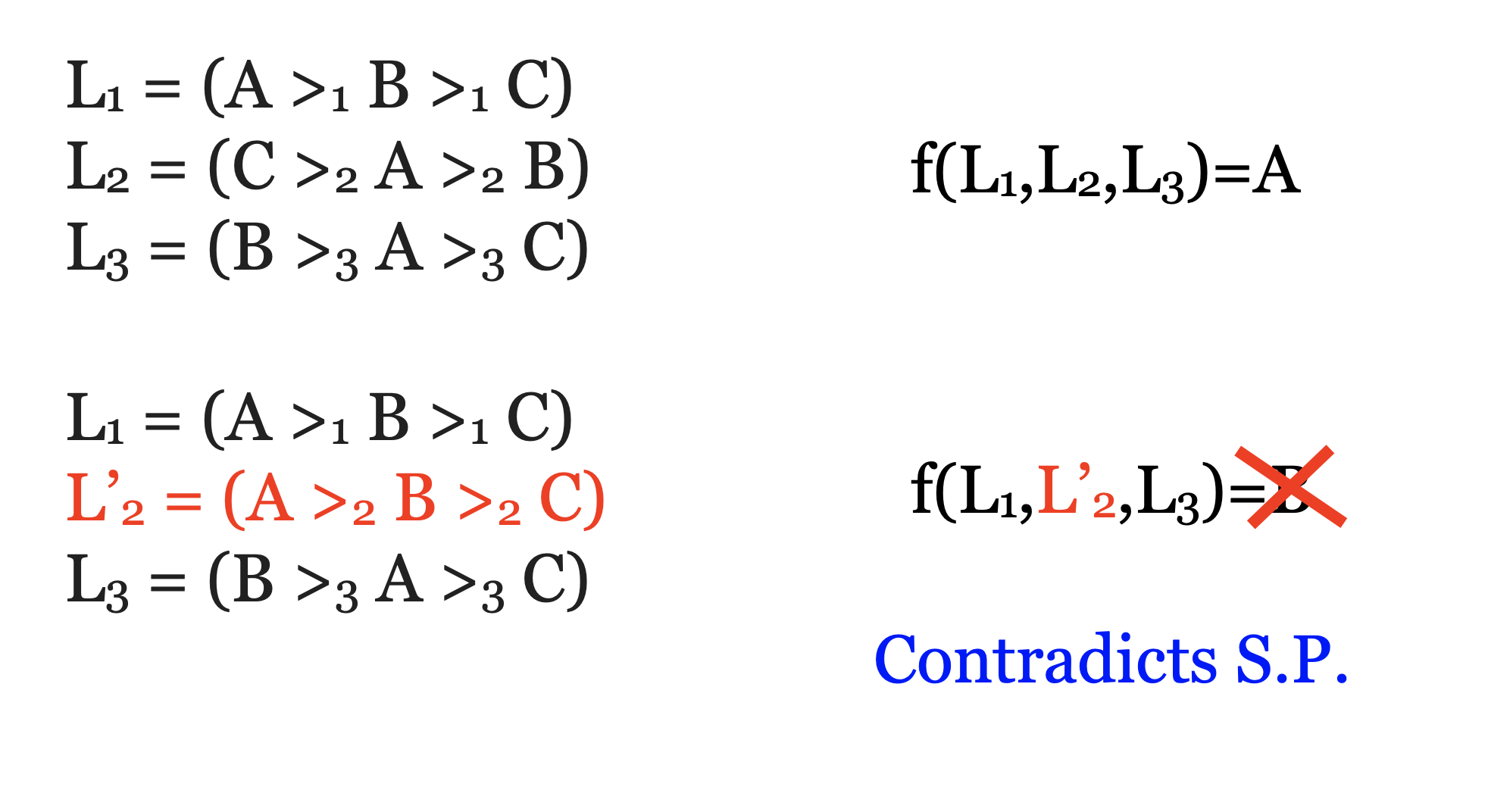
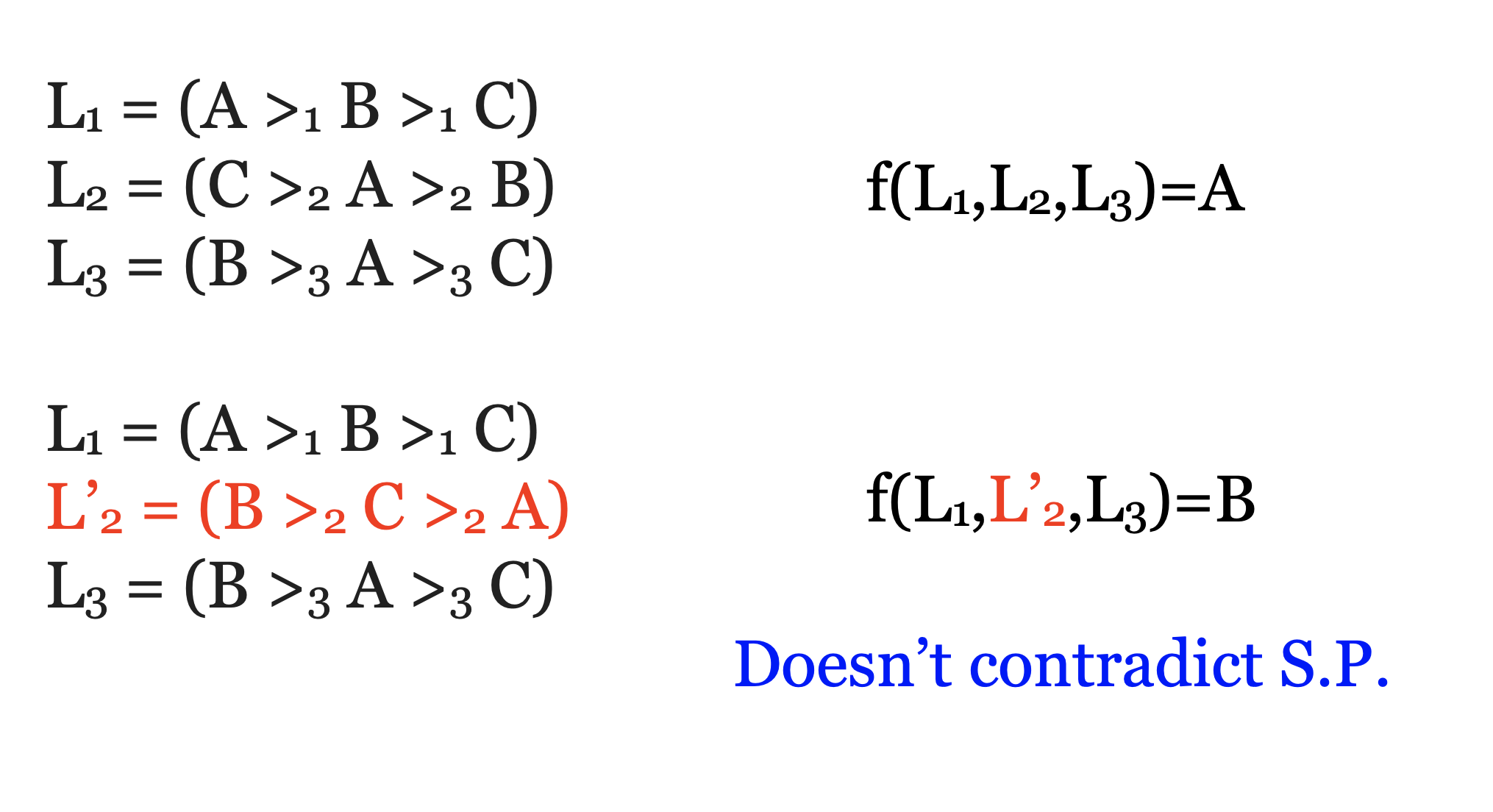
-
Pareto Efficiency: whenever an alternative a is on the top of every individual’s ranking Li then f(L1,…,LN ) = a
-
1
-
L1 = (B >1 C >1 A)
-
L2 = (B >2 A >2 C)
-
L3 = (B >3 A >3 C)
-
==> f(L1,L2,L3) = B
-
2
L1 = (D >1 B >1 C >1 A)
L2 = (D >2 A >2 B >2 C)
L3 = (D >3 C >3 A >3 B)
-
==> f(L1,L2,L3)=D
-
3
-
4
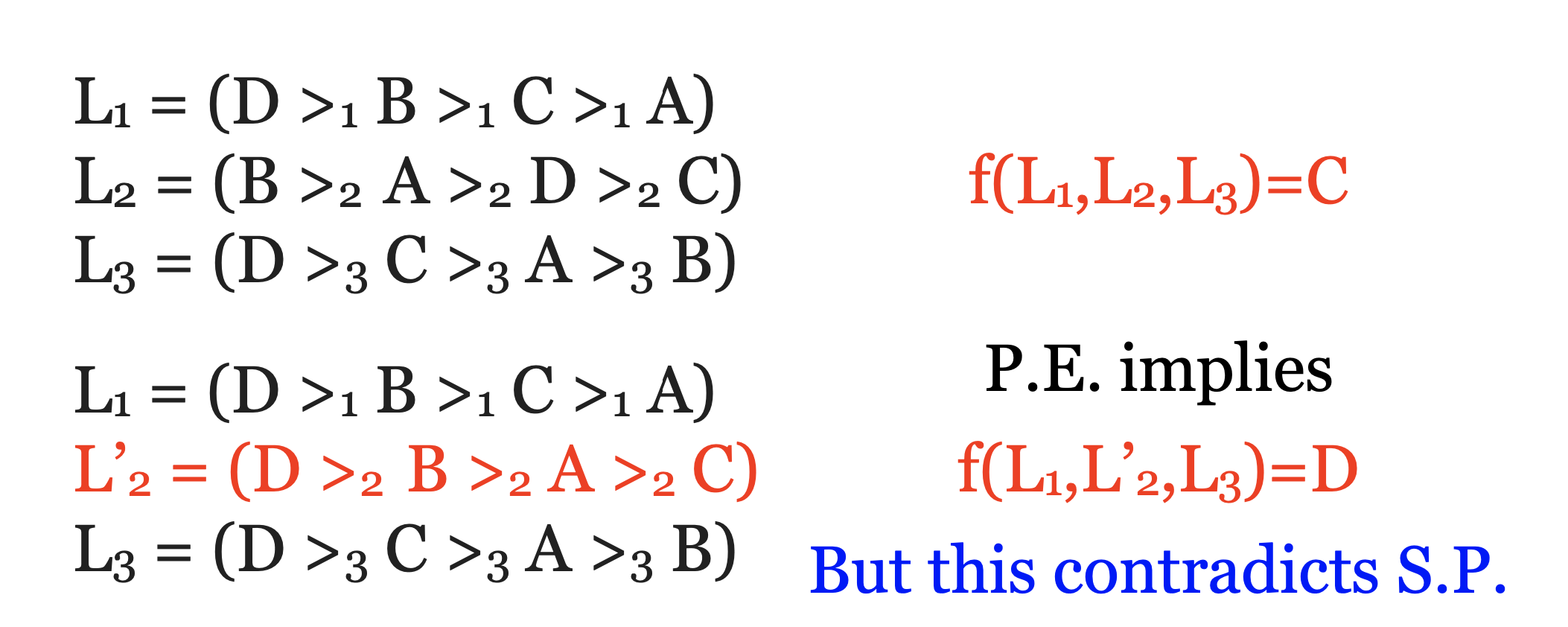
-
Monotonic: If f(L1,…,LN)=a and for every individual i and every alternative b the ranking L’i ranks a above b if Li does, then f(L’1,…,L’N)=a
-
1

-
2
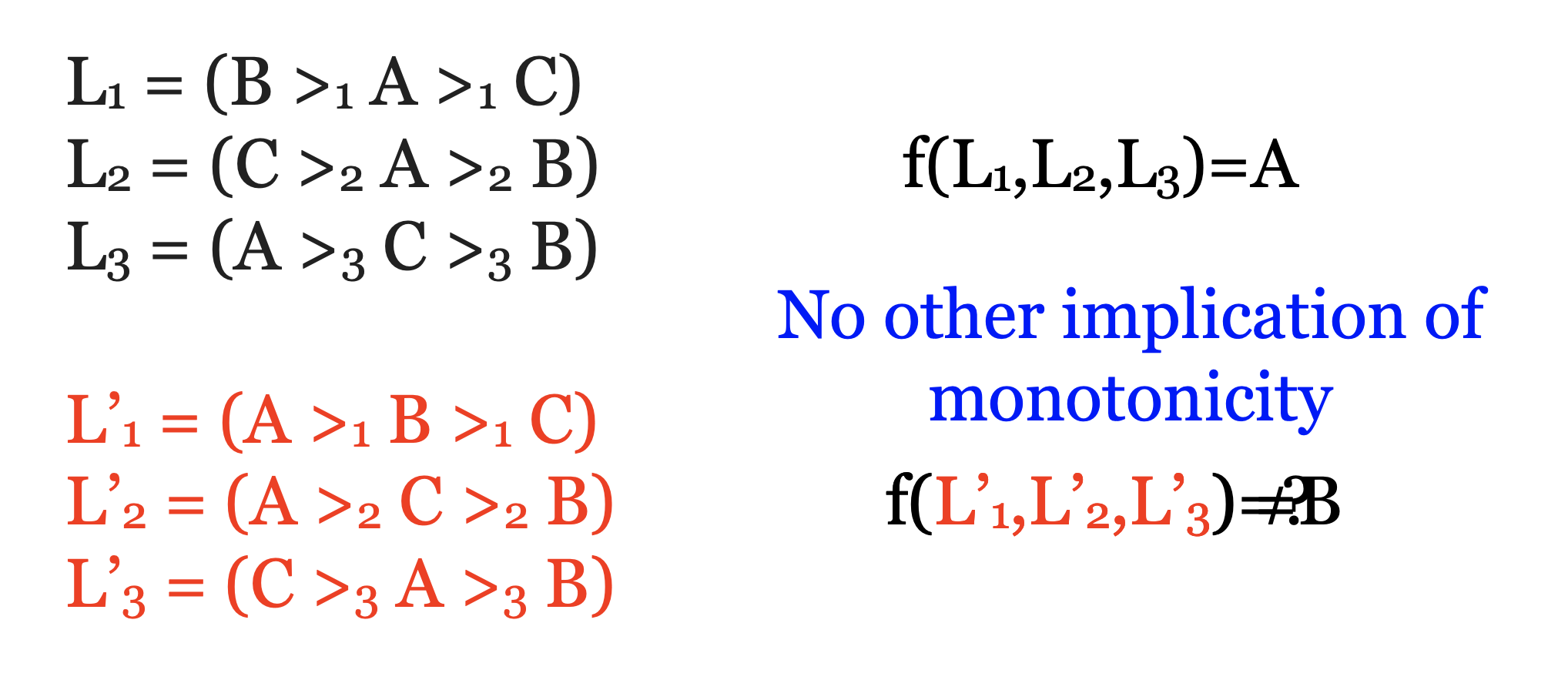
-
Dictatorial: If there is an individual i such that f(L1,…,LN)=a iff a is at the top of i’s ranking: f(L1,…,LN)=f(Li)
-
1
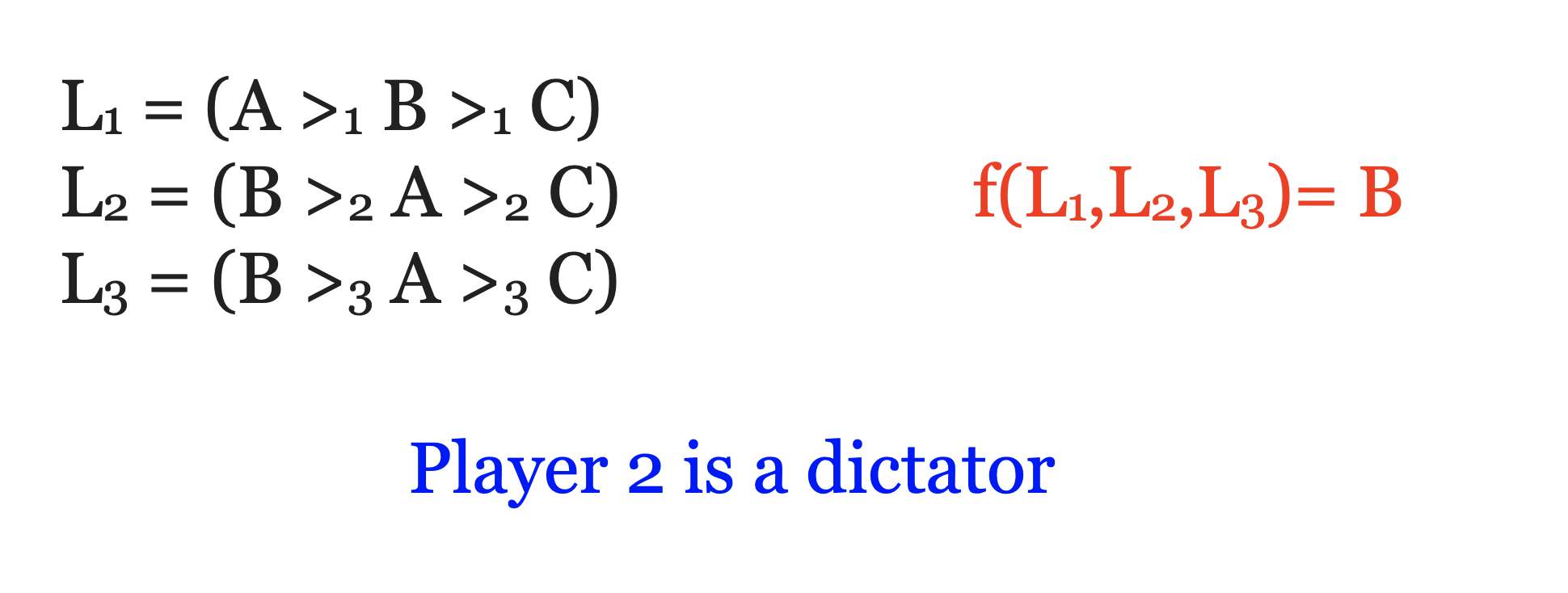
-
2
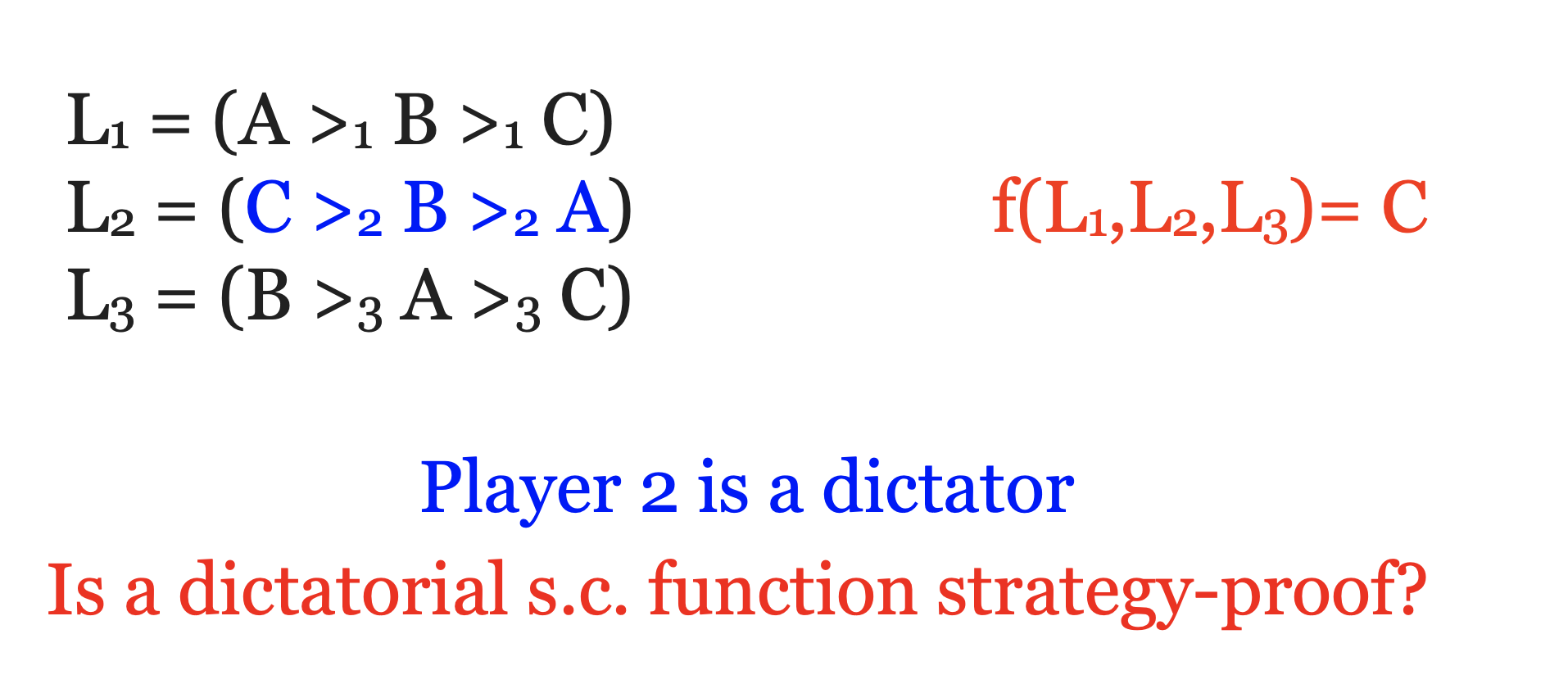
Summary
-
Strategy-Proof or Incentive Compatible: for every individual i, every ranking profile L=(L1,…,LN), and every L’i, f(L’i,L-i)≠f(L) implies that f(L) >i f(L’i,L-i) (and also f(L) <’i f(L’i,L-i))
-
Monotonic: if f(L1,…,LN)=a and for every individual i and every alternative b the ranking L’i ranks a above b if Li does, then f(L’1,…,L’N)=a
-
Pareto Efficient: whenever an alternative a is on the top of every individual’s ranking Li then f(L1,…,LN )=a
-
Dictatorial: If there is an individual i such that f(L1,…,LN)=a iff a is at the top of i’s ranking
-
We would like to design s.c functions that satisfy
-
Strategy-Proofness
-
Non-Dictatorship
Gibbard-Satterthwaite Theorem
-
Theorem: If |A|≥3 and f is strategy-proof and onto, then f is a dictatorial social choice function.
-
Onto: For any alternative a 2 A there exists a profile ranking such that f(L)=a.
